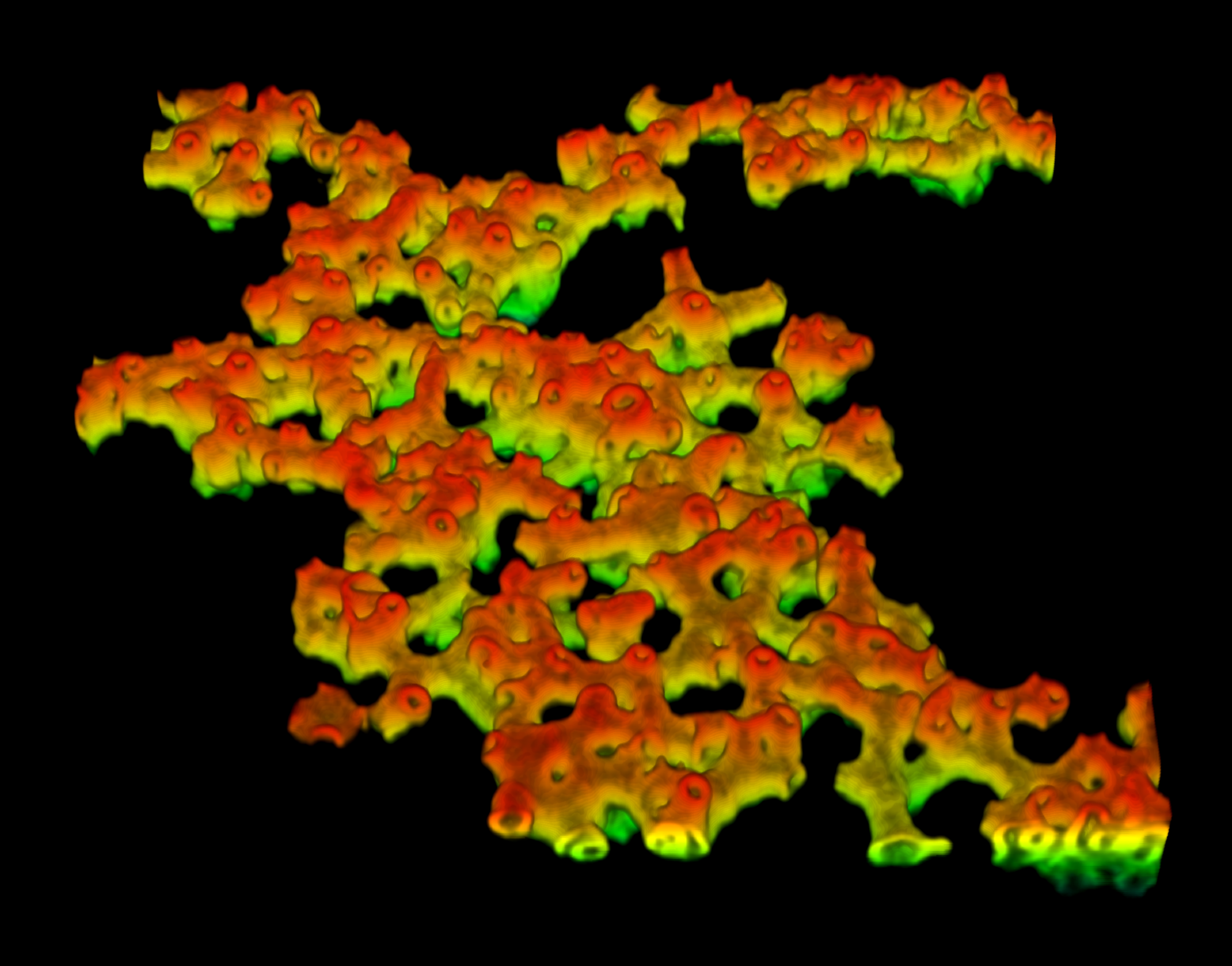Reviewed by Danielle Ellis, B.Sc.Sep 13 2022
Cell membranes switch between several 3D structures with ease. It is a remarkable characteristic that is crucial for a number of biological processes, including viral infections, nutrition transfer into cells, cell motility, and cell division. An experiment recently developed by scientists at the Indian Institute of Science (IISc) and their associates shed light on the mechanism by which such operations might take place in real-time.
 Image (false colored) of a sponge-like phase of fluidic colloidal membranes, self-assembled from a binary mixture of short and long rods. Image Credit: Ayantika Khanra.
Image (false colored) of a sponge-like phase of fluidic colloidal membranes, self-assembled from a binary mixture of short and long rods. Image Credit: Ayantika Khanra.
Colloidal membranes are layers of aligned, rod-shaped particles that are micrometers thick. Since colloidal membranes share many characteristics with cell membranes, they offer a more manageable system for research. Cell membranes are fluidic sheets in which each component is free to disperse, in contrast to a plastic sheet where all the molecules are fixed.
This is a key property of cell membranes which is available in our [colloidal membrane] system as well.”
Prerna Sharma, Study Corresponding Author and Associate Professor, Department of Physics, Indian Institute of Science
The research was published in the journal Proceedings of the National Academy of Sciences.
By producing a solution of rod-shaped viruses with two different lengths—1.2 μm and 0.88 μm—the colloidal membranes were constructed. The scientists looked at how the proportion of short rods in the fluid affects the morphology of the colloidal membranes.
I made multiple samples by mixing different volumes of the two viruses and then observed them under a microscope.”
Ayantika Khanra, Study First Author and PhD Student, Department of Physics, Indian Institute of Science
The membranes changed from a flat disc-like shape to a saddle-like shape when the ratio of short rods was raised from 15% to between 20 and 35%. The membranes began expanding and fusing together over time. The number of ups and downs experienced as one goes along the saddle edge served as the basis for classifying saddles.
The researchers noticed that the saddles generated a larger saddle of the same or higher order when they joined laterally. But when they came together at a nearly right angle, away from their edges, the finished arrangement resembled a catenoid. After that, the catenoids combined with other saddles to form more complicated structures like trinoids and four-noids.
The researchers have also suggested a theoretical model account for the behavior of the membranes as it has been seen. All physical systems tend to migrate toward low-energy structures in accordance with the rules of thermodynamics. A water droplet, for instance, takes on a spherical shape because it has less energy. This indicates that shorter-edged designs, like a flat disk, are preferred for membranes.
The Gaussian curvature modulus is another characteristic that contributes to the definition of the membrane configuration. The study’s significant finding was the demonstration that when the proportion of short rods rises, the membranes’ Gaussian curvature modulus rises as well.
This explains why adding more short rods made the membranes move toward lower-energy saddle-like forms. It also clarifies another finding from their experiment, which was that high-order membranes were large and low-order membranes were smaller in size.
We have proposed a mechanism for curvature generation of fluidic membranes that is new. This mechanism of tuning the curvature by changing the Gaussian modulus could be at play in biological membranes as well.”
Prerna Sharma, Study Corresponding Author and Associate Professor, Department of Physics, Indian Institute of Science
She continues by saying that they intend to keep researching how additional microscopic alterations in the membrane's constituent parts affect its large-scale characteristics.
Source:
Journal reference:
Khanra, A., et al. (2022) Controlling the shape and topology of two-component colloidal membranes. Proceedings of the National Academy of Sciences. doi.org/10.1073/pnas.2204453119.